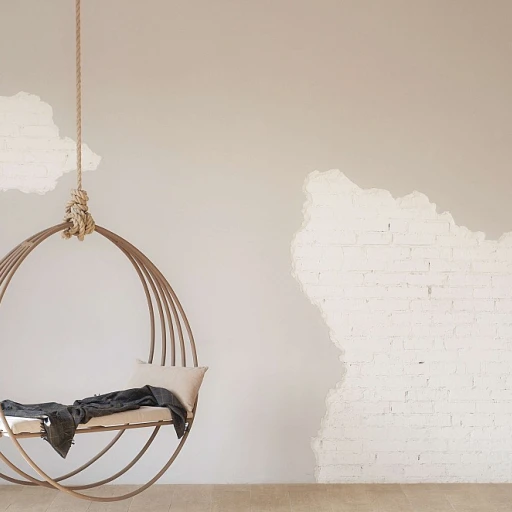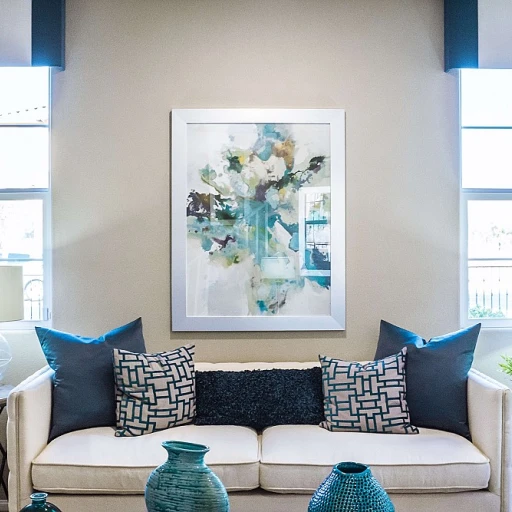
Understanding Material Durability
Assessing the Basics of Material Durability
The concept of material durability plays a crucial role in design, acting as the backbone for sustainable innovation. At its core, durability refers to the material's ability to withstand wear, pressure, or damage over time, without losing its intrinsic characteristics. This understanding forms the foundation for developing innovative strategies aimed at fostering sustainable practices in design.
To truly appreciate the importance of material durability, one must look beyond mere endurance. It's about creating products that maintain their functionality and aesthetic for longer periods. This extends the life cycle of products, ultimately leading to reduced waste and more efficient use of resources.
In the quest for sustainability, durability often intersects with eco-design principles, which seek to minimize environmental impacts from the very beginning of a product's lifecycle. By focusing on these initial stages, designers can identify materials that not only promise durability but also align with ecological goals. Inclusive design also plays a role here, ensuring that products meet diverse user needs while maintaining sustainability.
Understanding the nuances of material durability sets the stage for innovation. It's the guiding light for designers aiming to harmonize longevity with environmental consciousness. The subsequent exploration of innovation in enhancing durability will further highlight how these principles are adapted and reimagined in modern design practices.
The Role of Innovation in Enhancing Durability
Revolutionizing Material Concepts with Eco-Innovations
In the realm of design, innovation has become a cornerstone for enhancing the durability of materials, especially within the context of eco-design. As consumers and industries alike gravitate towards sustainability, the need to craft materials that stand the test of time without compromising the environment is paramount. This quest not only infuses the design process with creativity but also demands a rigorous exploration of the possibilities sustainability offers. The innovative process typically involves examining the lifecycle of materials to determine how their durability can be optimized while maintaining environmental integrity. This holistic approach considers every stage, from sourcing raw materials to the eventual point of recycling or disposal. Using state-of-the-art technology such as AI and advanced manufacturing techniques, designers can reimagine traditional materials, rendering them more sustainable and resilient. Eco-innovations can be seen in materials like bioplastics and recycled composites, which not only offer environmental benefits but also improve longevity and performance in various applications. For instance, engineering advancements have led to the creation of durable, plant-based materials that can displace conventional non-degradable plastics, showing promise in reducing carbon footprints. Furthermore, by exploring the hypothesis of media creative experimentation, designers can tap into an expansive range of possibilities, thereby encouraging the development of unique, sustainable solutions. This interplay between creativity and technology fosters a design ethos that harmoniously blends aesthetics, functionality, and sustainability. Overall, the fragile balance between durability and sustainability necessitates ongoing innovation. By understanding current challenges and leveraging advancements in green technologies, the design industry continues to forge a path towards a more sustainable future for materials.Case Studies of Durable Materials in Design
Real-world Examples of Durable Materials in Design Applications
The exploration of durable materials is more than a theoretical exercise; it manifests in tangible applications across various sectors, bringing both innovation and sustainability to life. From architecture to consumer goods, designers harness the potential of durable materials to craft solutions that are not only robust but also environmentally friendly. One illustrative example is the use of reclaimed and recycled materials in construction. Designers are increasingly opting for materials such as recycled steel and concrete, which not only reduce waste but also offer long-lasting structural integrity. This is particularly evident in urban architecture where the emphasis on sustainability is more pronounced. In the consumer goods sector, the adoption of bioplastics offers a compelling case of durability combined with eco-consciousness. Bioplastics, derived from renewable biomass sources such as corn starch, promise extended lifecycle and lower environmental impact compared to traditional plastics. This shift towards bioplastics exemplifies how innovation can amplify both sustainability and durability in design. Moreover, the field of fashion design has seen a surge in the use of organic and sustainable textiles. Brands are increasingly turning to materials like organic cotton or hemp, which are not only durable but also produced with minimal environmental impact. This transition is part of a broader trend toward eco-conception, where the lifecycle of a product from creation to decomposition is meticulously considered. Design innovation also embraces interactive design principles, as demonstrated in interactive prototyping in design. Here, the focus is on creating designs with adaptable materials that respond dynamically to users' needs, ensuring longevity and relevance over time. These cases underline the critical role that durable materials play in contemporary design, offering a pathway towards more sustainable and innovative solutions. The ongoing integration of these materials demonstrates the potential to revolutionize how products are made, used, and recycled, significantly amplifying the lifespan and reducing the ecological footprint of modern design outputs.Challenges in Achieving Sustainable Durability
Overcoming the Hurdles in Sustainable Material Design
Achieving sustainable durability in materials design is easier said than done. It's a balance of innovation, functionality, and eco-conception aiming for long-lasting solutions. Several challenges persist that designers and engineers must navigate with precision.
One of the primary challenges is aligning the performance of new materials with ecological standards. This involves rigorous testing to ensure that sustainability doesn't compromise the material's functionality. Environmental regulations and eco-friendly certifications must also be met, which can sometimes limit design freedom.
Another significant hurdle is the cost of innovation. Developing durable materials that are also sustainable often requires investing in new technologies, which can be financially demanding. These costs may initially slow down the adoption of innovative materials, as they are passed onto consumers or result in higher initial investments from companies.
Furthermore, the need for specialized knowledge and expertise is vital. Designers and engineers must stay at the forefront of evolving technologies and methodologies related to sustainability. Continuous education and collaboration across various fields are crucial to overcoming these obstacles effectively.
Lastly, there is the societal challenge of shifting consumer expectations. Products made from sustainable materials may lead to changes in maintenance routines or life span perceptions, requiring education and re-adjustment of user expectations. Educating the public on these benefits remains an ongoing effort that requires commitment from both companies and individuals.
Emerging Trends in Material Innovation
Exploring New Frontiers in Material Innovation
Material innovation is at the cusp of a transformative wave, as designers strive to match sustainability goals with the evolving demands of durability. The integration of cutting-edge technology and research has opened up new possibilities for creating materials that are not only long-lasting but also environmentally friendly.
Among the key trends, biomimicry stands out as a pivotal approach. Designers and engineers are looking towards nature for inspiration, developing materials that mimic natural processes and structures. This strategy not only enhances sustainability but also brings about unique design possibilities that were previously unimaginable.
Moreover, the rise of smart materials, which have the ability to respond to environmental changes, is shaping the future of design. These adaptive materials can actively participate in reducing waste by extending the life of products through self-repair or real-time adaptations to usage conditions.
Cross-Disciplinary Collaborations
The intersection of technology, design, and science has drawn various disciplines together, fostering innovative collaborations. Engineers and material scientists are increasingly working alongside designers to create novel solutions that highlight both functionality and aesthetics.
This collaboration also extends to the integration of data-driven insights, which helps in understanding how materials perform over time, contributing to the development of more robust and sustainable products.









